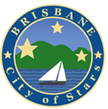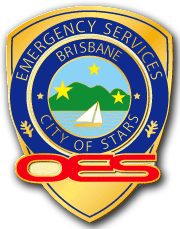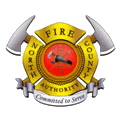Chapter 2a - A Town Called Brisbane
| Previous Segment | Next Segment |
A TOWN CALLED BRISBANE: 1920-1940
"I think my parents had what to me exemplifies the spirit of the people of Brisbane. They had a spirit of independence. During the height of the Depression, lots of people chose to remain in the cities and get in unemployment lines and sell those five-cent apples. It seemed to me that the people who came here were very poor, but they had this spirit of independence. They'd get these old boards or old tar paper, whatever, and put up these old shacks. They were only old shacks, you might say. But still it was your shack. It was your old tar paper. It was your old boards."
-Dorothy Radoff

>>>>>YOU'RE@ Chapter 2 -- "A Town Called Brisbane" -- Page 11>>>>>
Arthur Annis Comes to Town
"An idea so dominatingly different and almost unbelievable..."
Although 1929 is usually associated with the catastrophic Wall Street Crash, this year had positive connotations for the people of Brisbane. For, in 1929, Arthur Annis came to town.
Annis is best remembered as a realtor who helped develop the area and as the man who gave Brisbane its name. But his real impact upon the community can only be described by the people who felt his influence directly.
In the March 3, 1934 issue of the Brisbane Sun, Arthur Gledhill, the founding editor of that paper, paid his tribute to Annis:
"Our beloved Brisbane, now a husky 5-year-old youngster, was not a 'happenstance.' For twenty long years, known as Visitacion City, it lay dormant --waiting for the opportunity to be of service to substantial home-loving people who could be happier if they could, with small means, be independent.
"Then in 1929, happily, Arthur Annis came along, popularly known as the 'Daddy' of Brisbane, and a really truly Santa Claus to Brisbane's pioneer children numbering 28 in 1929; steadily increasing to 230 in 1933 (which is but one example of what a good 'idea' will do)!
"Annis's idea was extremely simple -- to permit good citizens of small means to build their homes, without unreasonable restrictions, as soon as they contracted to purchase their lots,..
"What an idea! What a basis for establishing a new community of virile people with similar aims and ambitions, paramount of which is independence. Many of Brisbane's pioneer residents built their own homes with their own hands and the help of neighbors -- representing the true community spirit which has prevailed ever since.
"Was this idea a success? Not immediately, because the idea was so dominatingly different and almost unbelievable that it took another idea to bring it into full significance. Annis realized the handicap of the name 'Visitacion City' --being so close to a San Francisco city district of similar name that people confused the two locations. Then one night an inspiration! 'Why not change the name?'
Then 'What name?' Something easy to say, to remember, and entirely different from any other western city. Happy thought - Ah! - BRISBANE!"
"Here's the best news I have ever been permitted to pass on..."
More than 400 homes were built in the area between 1929 and 1933. This despite the advent of what the Brisbane Sun described as "four years of the worst depression the world has ever known." To entice people to continue building in the Brisbane area, Annis offered good land at prices that were too good to pass up. As an example, Annis penned the following advertising flyer in 1933:
"Here's the best news I have ever been permitted to pass on to my friends in Brisbane:
"At my insistence, the owner has given me written permission to dispose of all the remaining unsold lots in the Original Brisbane Subdivision at 'clean-up' prices...
"These lots were low priced to begin with... .They have been priced, and sold, at from $150 to $300.
"The new list, filed at the Bank, quotes them at the ridiculously low prices of $50, $75, and $100'

In addition to the housing boom, Brisbane developed an increasing array of public services in the period between 1929 and 1933. The Sun boasted of the most remarkable PERMANENT development California has ever known in such a short space of time." To prove its point, the paper listed the following accomplishments:
- "Post Office authorized in 1930
- Public Free Library instituted in 1932
- Public School opened in August 1930 (Primary to 5th grades)
- Fire Department organized in 1933
- Bus service to San Francisco and peninsula points, 1930
- $12,000,000 Bayshore Highway completed
- Four miles of new roads
- Water service increased - including four miles of new water mains
- Natural gas service now being installed by P.G. & E.
- 'Brisbane Sun,' weekly neighborhood newspaper started 1933."
No discussion of Arthur Annis would be complete without asking the question: Why did he call the town Brisbane? According to Annis's daughter, he named it after the city in Australia. Others believe that he named the town in honor of the popular journalist Arthur Brisbane. Both theories are persuasive. Certainly, both theories have their ardent supporters. And perhaps both contain a certain measure of the truth.
Whatever the source of inspiration for the town name, the attraction of good land at modest prices made moving to Brisbane an attractive proposition during the height of the Depression. With lots selling for as low as $50, it should have come as no surprise that more than 400 homes were built in the area between 1929 and 1933-- "a building record unsurpassed," noted the Brisbane Sun, "by any other community in the United States, or any other part of the world."
New Arrivals
"There was a Depression going on..."
The onset of the Great Depression brought a number of new settlers to the Brisbane area. Drawn by the promise of a mild climate and cheap land, they came to forge a new life for themselves and for their children.
"There was a Depression going on," recalls Felix Schwenderlauf, who came to Brisbane in 1932. "Rents were so high in the city that we moved to Brisbane to get cheaper rent. I had a big family and I had to raise my kids. So I moved out here.
For many people like Felix Schwenderlauf, moving to Brisbane meant no longer having to rely on the mercy of the landlord for affordable housing. Remembers Bud Sweet, "During the Depression, a lot of people came out. There was no building laws. They'd just put up any kind of shack they wanted to live in. They did it to beat the landlord, that's all."

"My first memories of our city..."
Bernice Lummus Blanchard was among the first to respond to the opportunity of good land at low prices. "My first memories of our city go back to the spring of 1929 when my family drove from San Francisco to picnic in Brisbane, she relates. "At that time Brisbane was a handful of homes. There were dusty, narrow roads, chickens walking here and there, endless patches of wildflowers, cows nibbling grass, and birds adding to the beauty of the hills and trees with their songs.
"By the summer of 1929, Mr. Annis and my folks had become good friends due to our weekly treks to Brisbane. He convinced us to buy and build in Brisbane. After all, $300 for two lots on Mariposa Street wasn't too bad. By November 1, 1929, we had moved into our new home. It was the only home on our block for two years. We had to dig a cesspool since there were no sewers. We also bought a new wood stove to cook our food and heat our home. Our food was kept in a cooler. We didn't have an ice box or an ice man. As I look back, I realize how busy my mother was, keeping home. There was no telephone, no neighbors close by and no street lights. Our only entertainment was the radio.
"As time passed, the Depression became more threatening every day. Families sharing the same dire predicament as our own were moving into Brisbane. The quiet town, accustomed to the chickens, birds, and roosters each morning, now woke up to the sounds of hammering and wood saws as new homes were being built. That was the start of the exchange service in Brisbane. If one family had their home almost completed, they followed the sound of hammers and the saws to offer assistance. The men helped with the building and the ladies cooked the meals for the workers. Numerous staunch friendships and sturdy homes have weathered the test of time in Brisbane because of that exchange service..."

"...this spirit of independence..."
One of those families "sharing the same dire predicament" belonged to Dorothy Radoff "I lived in San Francisco until 1932, when my parents and I came to Brisbane," she recalls. "That was during the height of the Depression. I think my

parents had what to me exemplifies the spirit of the people of Brisbane. I don't want to sound real corny here, but I've always thought they had a spirit of independence."
"During the Depression, lots of people chose to remain in cities and get in unemployment lines and sell those five-cent apples. It seemed to me that the people who came here were very poor, but they had this spirit of independence. They'd get these old boards or old tar paper, whatever, and put up these old shacks. They were old shacks, you might say. But still it was your shack. It was your old tar paper. It was your old boards.
"I think this is carried through today, this independence of the people here. That's probably why my parents came here. My dad was out of work and of course the monetary problem came into it, too. You could buy a lot for $1 down and $1 a week, or $5 down, $5 a month. I can remember when the real estate man, Mr. Billings, would come once a month to collect the $5. There was many times when my parents just didn't have it. But nothing would happen. Who was going to come along and take our property back? Who could buy it? Nobody had any money anyway.
"I can remember what the town looked like when we first came. It didn't look too much different than it does today. That's because of this beautiful, natural setting. Of course, there were fewer houses and the streets were absolutely deplorable. You'd sink knee-deep into the mud when you went to the store.
"In those days, you'd hear the buzz of a saw or the hammer going. As most of the men weren't working, they'd go and help the person. It was, I guess, a lot like the pioneer days in this country. Everybody helped one another. There was this spirit of camaraderie.
"That's the thing I love about Brisbane. It hasn't changed that much. Where else can you go and say this? To me, that's progress. That's the meaning of progress...
"...in the Depression, you didn't have nothing..."
Lorene Harris was also among the many immigrants who came to Brisbane seeking relief from the general misery of the times. "I was born in Texas, a little town
named Kemp," she recounts. "When the Depression came along, I left Texas. My husband had come out and found a job and was staying with my sister and her husband up on Sierra Point. When he got ready, he sent me the money to come out, because in the Depression, you didn't have nothing. I came out on a Greyhound bus. Oh, I thought I never would get here. It's a long distance, you know. I saw the South San Francisco industrial sign and I thought I was seeing San Francisco. Then the driver didn't want to let me off at Brisbane.
"I thought that was very strange. He said, 'Do you know anyone in this town?' I said, 'Yes, I do. My sister and her husband live in Brisbane.' He said, 'Well, then, I will let you off.'
"I had two heavy suitcases. Little did I know what was ahead of me. That bus pulled off and here I am. The main entrance to Brisbane comes straight in. No pavement. No sidewalk. And it was rainy season, and muddy. I carried those heavy suitcases all the way in. At that time, on the corner where the liquor store is now was an old, old building with a drugstore. I went in there and asked about my sister and her husband. There was this little red-headed boy in there on his bike, and he knew all about them so he took me up on the hill.
"That's how I arrived in Brisbane. It was no streets, no sidewalk, nothing. That was in 1934. So we started out, bought a lot up there on Sierra Point. Paid $75 for it. We thought we were just flying..."

"It reminded me of the little home I was born in Germany..."
If Lorene Harris felt it was a long way from Kemp, Texas to Brisbane, Mary Arcotti must have felt like she was coming to a whole new world. After leaving her native Germany, she arrived in America and moved from place to place until she finally found a home in the small community by the Bay.
"I came to this country when I wasn't quite 20," she remembers. "My husband's half-brother lived in San Francisco. He found a job for my brother so we moved out there. I gave birth to two boys there -- one in '25 and the other in
'28. One boy had bronchitis so bad we used to take a ride down to Redwood City every unday to get away. On the way, we passed by Brisbane where it was always sunshine.
"So in 1930, we bought two lots here in Brisbane for $150. Then my husband got a job with the WPA. If you worked one week, they gave you three weeks of groceries, but you had no money for anything else. Ever so often, though, my husband got a job and we would take that money and buy old second-hand lumber. So we built a home on Alvarado Street. It's still there. For a long time, we didn't have no roof. Before the winter came, we got the roof put on. But we had no sewer. It was a cesspool.
"At the time, Brisbane reminded me of the little home I was born in Germany. You could go up on top of the mountains and see the city down below. There was nothing. Your neighbors were so far away.
"I couldn't talk English at the time. I had to learn. That's how I learned my English, by getting interested in the school. I did the cooking up there for seven years and I learned my English from the children. From there, I got interested in going to meetings, and then the first thing I knew, I was the hospitality chairman to serve the food. Then finally I got to be financial secretary. And then I was philanthropy chairman. That's where we got clothing for the children.
"Everyone was poor in town, but if someone did cast off their clothes, we made sure the children got them. And we got some money from the town for dental work. I couldn't have my own teeth fixed. I was poor too. When I was cooking up at the school, the government gave me powdered milk and, once in a while, butter. I would buy the crackers and the cocoa and I would serve 35 undernourished children in the morning. I would buy that out of my own pocket. And there were plenty of children who were hungry. Believe me.
"Fortunately, I am a good cook. That's why my children always said, 'Well, Mom, we've been poor but we always have had plenty to eat.' It may not have been steak, but I managed. I went and done housework for the drugstore. I got $3.50 a week. My oldest son worked at the drugstore. He was 14 at the time. He got $4 a week. We managed. We didn't ask for no welfare or nothing. I was taking in three or four laundries besides. When there's a will, there's a way."

A view of Brisbane in 1936. In the left foreground is the school annex and its main building is the building with the stairs.
>>>>>YOU'RE@ Chapter 2 --End of Page 17 >>>>>
| Previous Segment | Next Segment |





